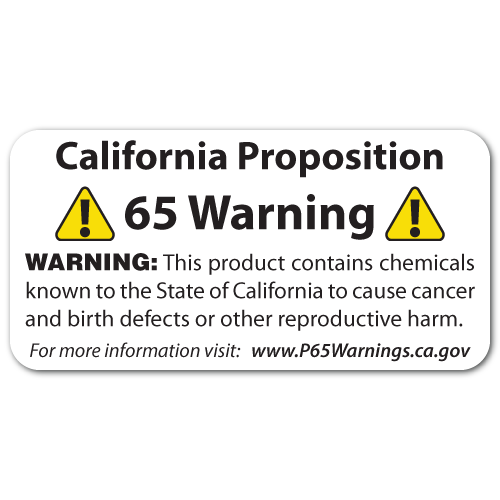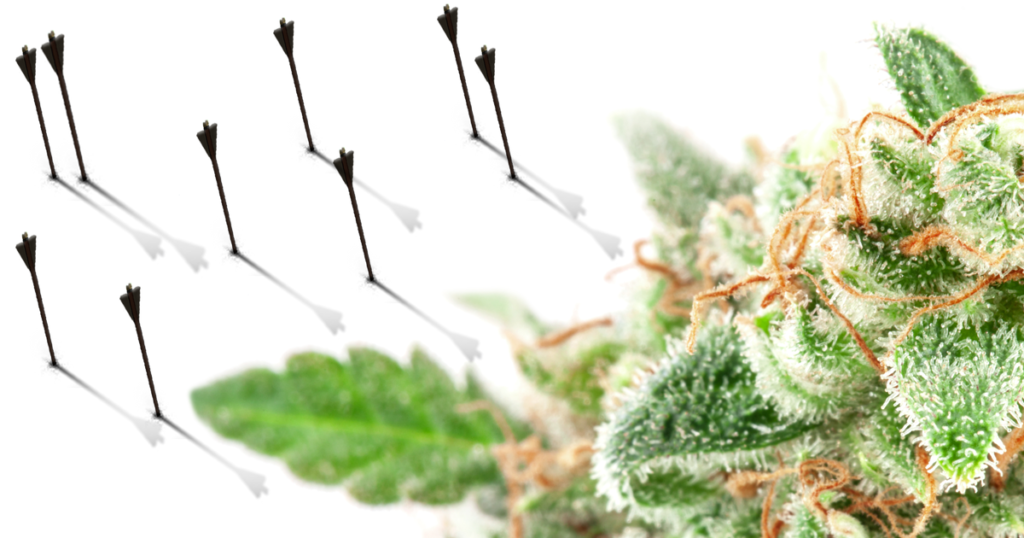California’s Prop 65 reveals the depth of unawareness that most lawmakers and government officials have about the cannabis plant and her constituent compounds.
From fishing lures to free pre-rolls, it seems everywhere you look these days in California you see a label or a sign warning you that whatever fun you are planning on having could potentially give you cancer.
The odds of actually getting cancer by slipping a plastic worm onto a fishhook are astronomically low. That free joint on the other hand… Still, after the highly litigious era of the 1980s and 90s, it has become standard business practice to just cover your ass at any expense, as the cost of failing to do so could collapse your company.
California’s Proposition 65 is the perfect example of this and is the reason why we are constantly reminded that pretty much everything worth doing could cause cancer or reproductive problems.
 The state lists over 1,000 chemicals that fall under the purview of Prop 65 and therefore require a warning label on their packaging. That warning can take a “short form”, stating in clearly legible printed text “WARNING: Cancer and Reproductive Harm – www.p65warnings.ca.gov”, or the “long-form” which should read something to the effect of “This product contains chemicals known to the state of California to cause cancer or birth defects and other reproductive harm. For more information visit www.p65warnings.ca.gov”.
The state lists over 1,000 chemicals that fall under the purview of Prop 65 and therefore require a warning label on their packaging. That warning can take a “short form”, stating in clearly legible printed text “WARNING: Cancer and Reproductive Harm – www.p65warnings.ca.gov”, or the “long-form” which should read something to the effect of “This product contains chemicals known to the state of California to cause cancer or birth defects and other reproductive harm. For more information visit www.p65warnings.ca.gov”.
Prop 65 is nothing new in California, it was established in 1986. In 2009, the state added cannabis smoke to the list of carcinogens covered by the proposition. Of course, there was no regulated market for cannabis in those days, so “brands” were few and far between providing few worthwhile targets for ambulance-chasing lawyers.
However, in January of last year, the state’s Office of Environmental Health Hazard Enforcement added “THC” to the list of Prop 65 chemicals. With a multibillion-dollar cannabis market now in place in California, and with a growing hemp market as well, the state gave these industries one calendar year to bring their products into compliance with the new changes made regarding THC and Prop 65.
Cannabis packaging is already a damn nightmare for everyone except packaging manufacturers, and now adding another lengthy bit of verbiage to already-crowded package designs not only led to more money being spent on re-designs and lawyer approvals but also led to god-knows-how-many old, non-compliant packages being thrown out, unused.
What a waste.
Of course, since Prop 65 provides no “safe harbor” when it comes to the presence of “THC” in a product, even hemp-derived CBD products are being affected by this new labeling law, since most of them contain at least trace amounts of residual THC.
This is the opening that scummy lawyers are hoping to exploit as they literally scour the industry looking for any brands that are not in full compliance with Prop 65 and sending them a Notice of Violation, and offering an out-of-court settlement.
These brands are then faced with the decision to settle for a few grand (terrorists win), or pay their own lawyer 3-5x that much money to fight it.
Additionally, the state could impose a $2,500 per day/per product fine on any brands found to be out of compliance with Prop 65.
While most manufacturers and retailers scramble to get their packaging into compliance, plenty of savvy wook chemists are already finding ways to push kilos of crude cannabis oil through the loopholes left by ignorant lawmakers and government officials.
Delta-8 THC, for example, has been a hot commodity lately precisely because of a similar ignorance about the plant from our federal government.
When the feds legalized “hemp” in 2018, the only threshold that they put in place to tell the difference between legal hemp and prohibited cannabis was an arbitrary cap of 0.3% Delta-9 THC. Anything above that is weed (BAD!), anything below is hemp (MEH!).
It took almost no time for our industries to figure out that CBD could be converted into a lesser-known cannabinoid called Delta-8 THC which, like Delta-9, gets you baked… just not quite as effectively.

Delta-8 THC naturally occurs in such small amounts that federal (and now state) regulators overlooked it.
Now, cannabis labs are concentrating and converting truckloads of it and trucking it across all 50 states.
The fact is, there are hundreds of known cannabinoids in the cannabis plant. To isolate one – Delta-9 THC – and try to regulate an entire industry around it reveals a stunning depth of unawareness about this plant.
More on that in an upcoming article…

















